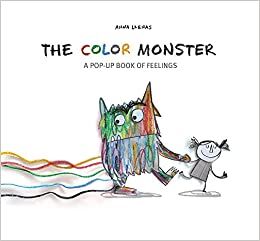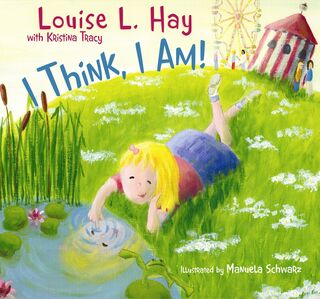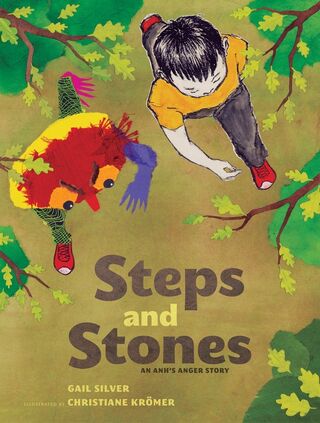Emotion Regulation
Supporting Children’s Emotion Regulation Through Literature
Emotion education is key to strengthening our ability to cope and regulate.
Posted March 3, 2022 Reviewed by Vanessa Lancaster
Key points
- Emotional education through literature can provide opportunities for open discussions with children.
- We can think of these books as ways to exercise the prefrontal cortex and amygdala.
- Emotion regulation does not come out of a vacuum; books provide opportunities to practice essential regulation skills.
As a parent of three young children and child psychologist, I am always trying to find different ways to teach children about their emotions and learn ways to be mindful and aware of their feelings and thoughts. This mindful awareness is one of the most important steps in learning emotion regulation.
One of my favorite ways to teach these ideas is through children’s books. Below, I outline some of my favorite mindful storybooks that engage children (and parents!) in gaining insight into their emotional states and teaching helpful ways to regulate and use mindful practices in daily life.
It is never too early to open these discussions. Adding these books to your reading list or bedtime routine may educate and provide opportunities for open discussions with children.
We can think of these books as ways to start exercising our children’s prefrontal cortex (i.e., thinking and planning) and their amygdala (i.e., emotional responses).

1. Peaceful Piggy Meditation by Kerry Lee MacLean. This book is one of my favorites. It provides an opportunity to acknowledge that everyday hustle and bustle while also teaching families about some ideas around slowing down and taking some time to just be.
There are also engaging mindfulness exercises that the author provides at the end of the book, further solidifying the idea of mindful well-being. As Kerry Lee MacLean says, “You brush your teeth to keep them clean and healthy; you meditate to keep your mind happy and healthy.”

2. Breathe Like a Bear by Kira Willey, illustrated by Anni Betts. This book is a treasure for younger children. It includes fun exercises to do as a family each day, helping stay connected while teaching children important mindfulness tools that help engage them in the present moment, increase attention, and reduce stress.
Imagine breathing in slowly to smell hot chocolate and breathing out slowly to cool it off. It also has a section on how to get our grumpies out, such as blowing bubbles or engaging in various body stretches.

3. Hey Warrior by Karen Young, illustrated by Norvile Dovidonyte. This is a fantastic storybook about worries and anxiety. This book helps children (and families) understand where anxiety comes from, the physical symptoms, and what we can all do to feel more empowered. This story engages children of all ages and provides terrific exercises at the end of the book to apply these ideas and reflect.

4. Your Fantastic Elastic Brain: Stretch It, Shape It by JoAnn Deak, illustrated by Sarah Ackerley. I may be biased, but I love learning about the brain! I find it important to understand how our bodies, thoughts, and emotions are connected. This book is an engaging and fun way to learn about the brain and the concept of neuroplasticity.

5. The Color Monster by Anna Llenas. This is an adorable pop-up book with different colors representing different feelings. This book is meant to be an engaging way to explore feelings with younger children.
I strongly believe that emotion education from an early age is a powerful way to help children understand themselves and develop empathy for others in the world. The earlier we teach children about emotions, the more they can identify and regulate them!

6. I Think, I Am! Teaching Kids the Power of Affirmations by Louise Hay and Kristina Tracy, Illustrated by Manuela Schwarz. This book is a beautiful way to teach children and youth (and adults!) to look at things from a different perspective and the power that shifting our thoughts can have.
Taking the time to talk to children about thoughts and emotions can make a powerful difference in their development; understanding the link between thoughts and feelings contributes to strengthening executive functioning skills and, in turn, better emotion regulation.
The positive affirmations and the beautiful illustrations in this book are fantastic engagement tools.
This book is also a great education tool to help notice negative, unhelpful thoughts and to shift these thoughts to something more positive and helpful.

7. What Do You Do With A Problem by Kobi Yamada, illustrated by Mae Besom. This book is a great way to open up discussions about problems and see them as opportunities to grow and learn. It is an inspiring book for both children and adults.
By pausing and bringing curiosity to challenging times, we learn to see things from a different perspective and strengthen our ability to face challenges.

8. Anh’s Anger and Steps and Stones: An Anh’s Anger Story by Gail Silver, Illustrated by Christiane Krömer. There are few books that I’ve come across that have done such a beautiful job of engaging older children in exploring their anger and how to cope with these strong emotions.
This book supports the learning and acceptance of difficult emotions. It provides some strategies for coping with these big emotions, such as bringing curiosity to them, talking back to the anger, and counting our steps.




